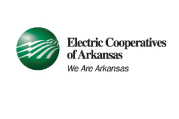What I Learned in the Last 10 Years Defending BSA | The Software Alliance Audits
I am an intellectual property attorney in Southlake, Texas who has handled more than 230 Business Software Alliance audit matters for small to medium-sized companies. For the last ten years, I have been representing end-user companies nationally in software audit matters initiated by major software publishers including Microsoft, Adobe, Autodesk, IBM and their trade groups including the BSA | The Software Alliance. Here is what I learned over the years:
1. Audit Effective Date – this is the date on the BSA’s initial letter requesting the audit. Many targets don’t understand that the audit only relates to the computer software products installed on this date and the invoices for purchases made prior to this date. Understanding the importance of the audit effective date in a BSA audit matter is the first step to a successful outcome.
2. Discovering What is Installed – many clients delay taking action in response to a BSA |The Software Alliance letter for various reasons. This delay often makes evidence gathering more difficult. I advise my clients to conduct a network inventory using a quality discovery tool as close in time to receiving the initial audit as possible. By doing so, the audit target is preserving evidence and avoiding inaccuracies due to changes over time.
3. What Constitutes Proof of Licenses – The BSA | The Software Alliance targets small businesses that frankly are not that great at record keeping. When it comes to proving ownership of the BSA member software installed during an audit, most audit targets struggle. The targets that are most successful are able to leverage vendor records showing historical software purchases. Even though these vendor records are not invoices, they are good proof in audit cases. Unfortunately, purchase orders, end-user license agreements, certificates of authenticity and many other non-invoice undated indicia of ownership are not considered good proof. Manuals, cd’s, products keys are all also not considered good proof. The best proof in a BSA | The Software Alliance audit is dated proofs of purchases from authorized resellers.
4. Interim Confidentiality / 408 Agreements – In 2004, I realized the importance of protecting my client’s audit materials in BSA audit cases. I negotiated an agreement in advance of producing the audit materials that protected the confidentiality of the information disclosed and prohibited the BSA from using the audit materials against my client in the event that the case was not settled out-of-court. Ten years later, this practice is widely used in software audit matters generally and has become so routine in BSA cases that the BSA lawyers now send us a version of that agreement containing the important provisions I negotiated in 2004. The reason this practice has become universally accepted is because in litigation the defendant would not be required to gather the audit materials in discovery. Because the target is doing more than they otherwise would be required to do in court, it makes sense for the BSA | The Software Alliance to agree to not use or disclose the information shared other than in connection with attempting to settle the dispute.
5. Calculating Financial Exposure – One of the first things I do when I get involved in a BSA audit case is to try to calculate the financial exposure my client is facing. This is surprisingly easy in BSA | The Software Alliance cases because it applies a similar formula to all cases. If the client can provide me with the deployment and entitlement information, I can usually calculate their exposure very accurately. Frequently, a client will come to me after receiving a settlement demand from the BSA looking to replace their current lawyer. These lawyers always get fired because they failed to calculate the exposure for the client and allowed the client to be surprised by the BSA’s financial demand. Our audit defense process is designed to ensure that our clients are not surprised.
6. Un-Bundling Software Suites – Microsoft Office and Adobe Creative Suite are two compilations that are frequently involved in BSA audit matters. The BSA unbundles the software suites and attempts to recover up to three times the MSRP of each of the components for each installation of allegedly unlicensed software. This approach grossly exaggerates the economic damages in a BSA audit matters and is very controversial. We recently litigated this issue in a New York Federal District Court but the case was settled before the court could rule on the issue. If your BSA audit case involves software suites, you should be prepared to aggressively negotiate on this point.
7. What Constitutes a Good Settlement – Most clients come to me saying that they want to settle their case out of court and get a “good deal.” What constitutes a good deal can depend on a number of factors including monetary and non-monetary aspects of settlement. To gauge a monetary settlement, most cases will settle between 40% and 60% of the BSA’s original demand. If a target does not want the BSA to issue a press release at the conclusion of the case, we generally negotiate confidentiality provisions that prohibit such disclosures. The BSA will expect a monetary premium for settling with confidentiality. Other key terms include negotiating out of future third-party inspections.
My team and I have developed the tools, processes, and track record to deliver consistent results to or for our clients based on a decade of defending BSA audit matters
















